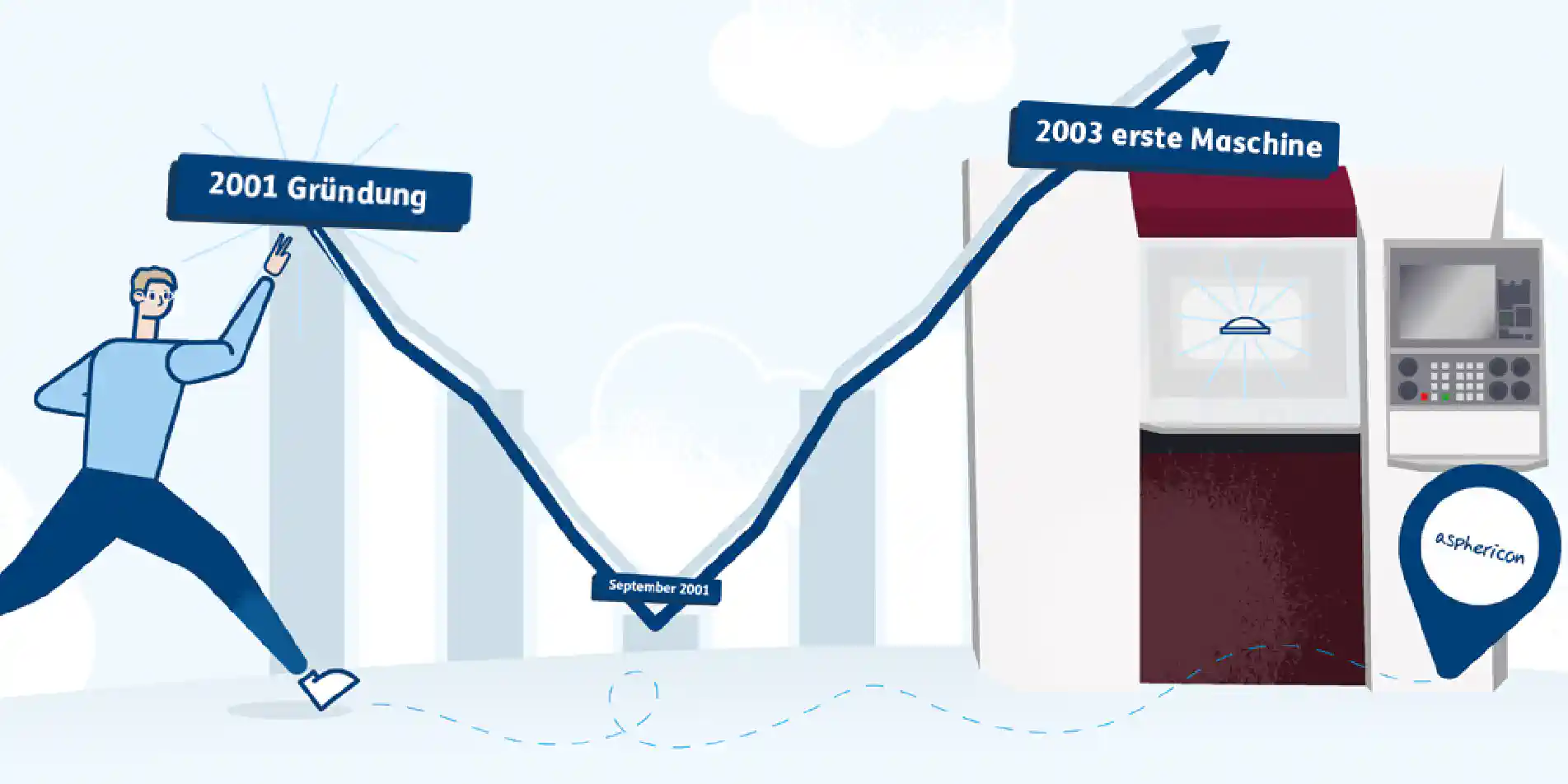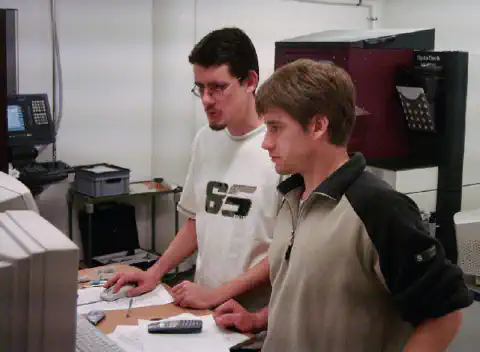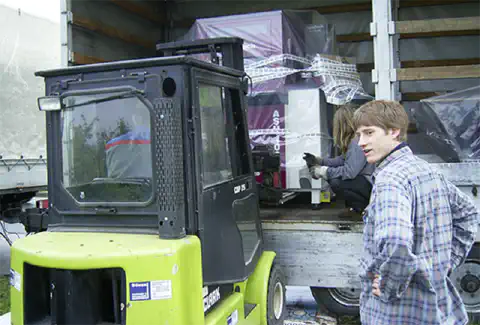
Story 2: Accepting challenges. Overcoming Obstacles
All beginnings are difficult, or to use Mark Twains’ words “The man with a new idea is a crank until it proves successful.” How asphericon was able to prove its own idea…
How asphericon was able to prove its own idea…
“More and more high-tech companies are trundling in the death zone. Stock market experts predict: Only one in five companies on the New Market will survive,” headlined Der Spiegel magazine in April 2001, describing the decline of the hype surrounding the German high-tech stock market. This “New Market” had been in a deep crisis since 2000. The longed-for boom in start-ups ebbed away.
One month after this prophetic headline, asphericon is founded in Jena - a technology startup that wants to revolutionize the optics industry with smart manufacturing management. For asphericon, everything was set to ‘Go!’ - except for the funding of the required multi-million dollar production facility. The founders are now also feeling the emerging lack of willingness to invest.
After September 11, 2001, the situation worsens: willing investors are suddenly scarce. Instead of a willingness to take risks, the three founders are now repeatedly met with monetary restraint. Even the Thuringian Innovation Award, which they have received in the meantime for their convincing business idea, can only convince potential financiers to a limited extent. Could they not instead provide proof that their innovative lens processing method also works in the real world? They would love to - but how, without the tremendously expensive machines required for this?
Sven Kiontke and Thomas Kurschel test asphericon's software, the heart of the company
The three founders finally found a way out of this tricky situation at the optics machine manufacturer OptoTech, which allowed them to use the company’s own demonstration room during the weekends when the company was closed. So the founders use every possible minute in the machine shop to work on their first aspheric prototypes and adapt the code for the software by monday morning. The otherwise free weekends had become working days.
And indeed, the long shifts pay off: In the end, the investors are just as convinced by the results of their work as a first major customer: the client of the prototypes they have made.
In 2003, Sven Kiontke and his two comrades-in-arms were finally able to buy their own machines - from OptoTech, of course - and put their now well-developed business idea into reality. “From that point on, things kept going uphill until we reached the point where we are today,” Alexander Zschäbitz reports. When an idea works, it is worth sticking with it and bringing visions to life.
Delivery of the first company-owned machine for asphericon

